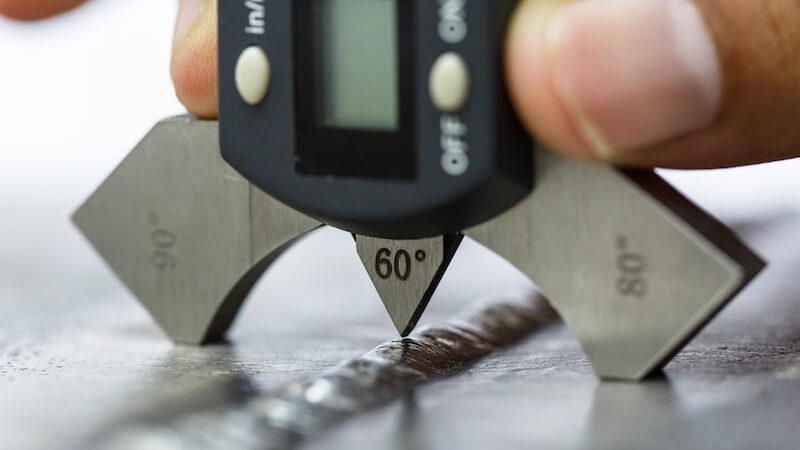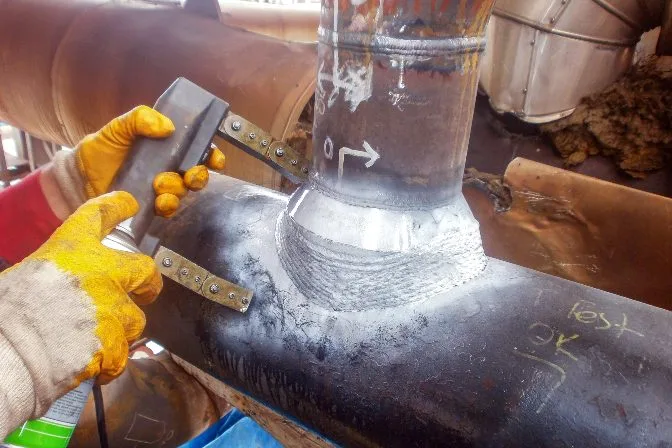Trustworthy Houston Welding Inspection for Conformity and Safety Requirements
Trustworthy Houston Welding Inspection for Conformity and Safety Requirements
Blog Article
A Comprehensive Guide to Recognizing How Welding Inspection Functions: Strategies, Specifications, and Best Practices for Quality Assurance in Metal Fabrication
Comprehending the details of welding inspection is crucial for keeping the integrity of metal manufacture. Different strategies, such as ultrasonic and aesthetic testing, play an essential duty in determining potential defects, while adherence to established criteria guarantees compliance and durability. Carrying out best practices can dramatically improve quality guarantee actions. The landscape of welding inspection is not without its obstacles. What problems develop in the field, and just how can these be effectively reduced? Checking out these elements exposes the deepness of this vital discipline.
Value of Welding Evaluation
Although welding is a critical procedure in numerous industries, its integrity straight affects the safety and efficiency of components and frameworks. Reliable welding inspection is important for recognizing issues that can endanger the quality and durability of welded joints. This procedure makes certain adherence to developed requirements and standards, which are crucial for preserving architectural stability and functional integrity.
Welding assessment serves multiple functions, consisting of verifying that the welding procedure has actually been implemented appropriately, analyzing the high quality of products made use of, and confirming that the completed item satisfies regulatory and sector criteria (Houston Welding Inspection). Via strenuous evaluation, prospective problems such as porosity, fractures, and incomplete blend can be found early, reducing and stopping expensive repair work security threats
Moreover, regular welding evaluations foster self-confidence amongst stakeholders, consisting of designers, customers, and governing bodies, by showing a commitment to quality control. The value of welding evaluation can not be overstated; it is essential not only for compliance with legal requirements but also for enhancing the total efficiency of welded structures. Eventually, a robust welding assessment program is a proactive step that safeguards against failings, guaranteeing the long life and reliability of bonded components in their designated applications.
Usual Welding Assessment Techniques

Aesthetic inspection is the initial line of protection, enabling assessors to identify surface area flaws such as splits, damages, or insufficient fusion. Radiographic screening makes use of X-rays or gamma rays to expose interior imperfections, making it ideal for intricate welds. Ultrasonic testing utilizes high-frequency audio waves to find subsurface flaws, providing accurate measurements of weld integrity.
Magnetic particle screening works for ferromagnetic materials, highlighting surface and near-surface stoppages when fragments are related to a magnetic field. Conversely, dye penetrant screening makes use of a fluid dye to disclose surface-breaking flaws, making sure that also the tiniest defects are discovered.
Each technique has its limitations and staminas, frequently necessitating a combination of methods for extensive evaluation - Houston Welding Inspection. By applying these assessment techniques, quality control in steel manufacture is accomplished, guaranteeing that bonded structures fulfill safety and security and efficiency criteria
Industry Specifications for Welding


The American Welding Society (AWS) and the American National Requirement Institute (ANSI) are two popular organizations that establish welding standards. AWS D1.1, for instance, details the demands for welding steel frameworks, while AWS D1.2 concentrates on light weight aluminum. Worldwide, the ISO look at here now 3834 typical addresses top quality requirements for combination welding, providing a framework applicable throughout national borders.
Ideal Practices for Quality Control
Quality assurance in welding is vital to achieving durable and safe buildings. Carrying out best methods makes sure that every weld satisfies the needed specifications and criteria. Establishing a detailed high quality monitoring system (QMS) tailored to the specific welding project is essential. This QMS should define treatments, duties, and duties to mitigate risks and improve accountability.
Normal training and qualification of welding workers are crucial for preserving an experienced labor force. Continual education and learning on the most recent welding strategies and modern technologies site makes sure that examiners and welders are educated regarding existing requirements and methods.
In addition, carrying out pre-weld assessments to review products and tools can prevent defects before they occur. Houston Welding Inspection. During the welding procedure, real-time tracking and documents of welding specifications aid determine incongruities quickly. Post-weld inspections ought to include extensive examinations utilizing non-destructive screening (NDT) approaches to ensure the integrity of the welds
Furthermore, preserving clear communication among group participants promotes a society of quality. Normal audits and reviews of the welding procedure help identify locations for improvement. this link By sticking to these best techniques, organizations can attain ideal high quality guarantee, eventually leading to boosted security and efficiency in metal fabrication tasks.
Challenges in Welding Evaluation
Although welding inspection is important for ensuring structural stability, it provides a variety of challenges that can make complex the assessment procedure. One considerable challenge is the irregularity in welding techniques and materials utilized, which can impact the uniformity of weld quality. Different welders may use varying approaches, causing inconsistencies that inspectors demand to examine and determine.
One more difficulty entails the discovery of problems. Non-destructive screening (NDT) approaches, such as ultrasonic and radiographic screening, can be complicated and call for proficient professionals to interpret results properly. False positives or downsides can take place, potentially resulting in expensive rework or endangered safety and security.
Furthermore, the existence of ecological factors, such as temperature level and moisture, can influence the stability of welds and the performance of inspection methods. Examiners have to additionally browse the regulative landscape, guaranteeing compliance with market criteria, which can vary by jurisdiction and application.
Conclusion
Finally, welding inspection plays an important function in making sure the integrity and security of steel fabrication. Using a selection of evaluation techniques, sticking to well established market requirements, and applying reliable high quality management techniques jointly enhance the integrity of bonded structures. In spite of the difficulties dealt with in the assessment procedure, a commitment to continuous renovation and adherence to finest practices can significantly boost the quality control framework, fostering better self-confidence among stakeholders in the welding industry.
Efficient welding assessment is essential for determining flaws that could compromise the top quality and toughness of bonded joints.Furthermore, regular welding evaluations foster self-confidence amongst stakeholders, including engineers, customers, and regulative bodies, by demonstrating a commitment to high quality guarantee.The American Welding Society (AWS) and the American National Specification Institute (ANSI) are two prominent companies that develop welding requirements. Throughout the welding procedure, real-time surveillance and documentation of welding specifications assist identify inconsistencies quickly. Despite the challenges dealt with in the examination process, a commitment to continuous improvement and adherence to ideal practices can substantially strengthen the top quality guarantee framework, fostering greater confidence among stakeholders in the welding market.
Report this page